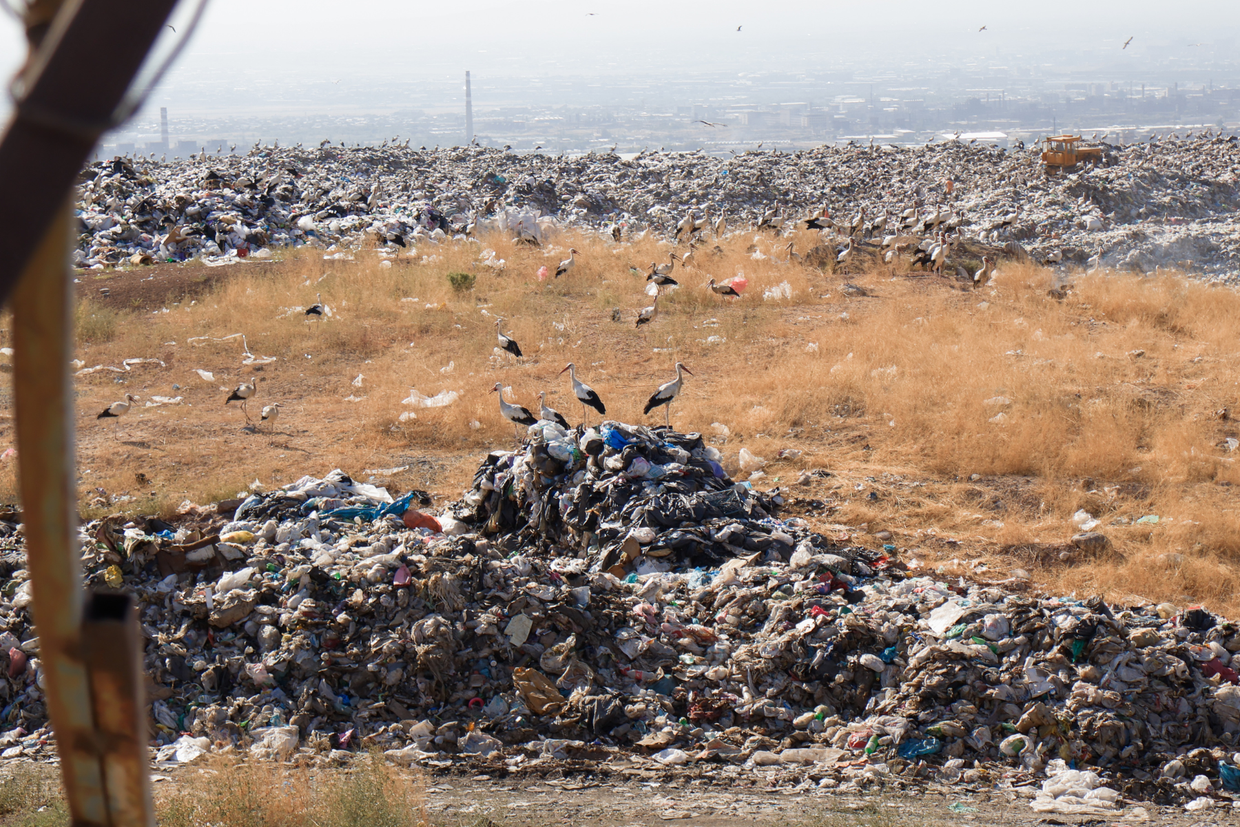
The Nubarashen landfill, Yerevan’s largest and oldest municipal waste site, has once again caught fire, forcing emergency crews into intensive containment efforts.
It took about two days for firefighters to isolate the blaze and extinguish the fire, using around 1,400 tonnes of water and 900 truckloads of soil, according to the Interior Ministry’s Rescue Service. Deputy Minister Kamo Tsutsulyan coordinated operations alongside city municipal workers.
According to Yerevan Mayor Tigran Avinyan, air quality levels in the city centre reached 105 AQI by late morning on Saturday — a level considered unhealthy for sensitive groups. While most of the open flames at the Nubarashen dumpsite had been contained by dawn that day a thick smoke blanket continued to hang over the city over the weekend, while Yerevan was crowded for the celebrations of the city’s 2807th anniversary. Avinyan noted that other districts were experiencing comparatively better air, but advised residents with respiratory conditions to limit outdoor activity. He also suggested the fire may have been deliberately set, stating that he had discussed the matter with the heads of the National Security Service and the Interior Ministry.
Established in the 1950s without permits, Nubarashen receives over 1,000 tonnes of unsorted waste daily, including plastics, textiles, medical refuse, and organic matter. The decomposing organic waste generates methane, a highly flammable gas, making the site prone to recurring fires.

For local residents, the hazards are both chronic and immediate.
Experts emphasise that firefighting addresses only the symptoms, not the underlying risks. Harutyun Alpetyan, a waste governance specialist at the American University of Armenia, has argued that long-term prevention requires expanded gas collection, better sorting of organic waste, and the construction of modern waste treatment facilities. Previous attempts, including the 2015 regional landfill project supported by the European Bank for Reconstruction and Development (EBRD), failed due to funding and operational challenges.
City officials have promised to replace the site with a modern waste processing facility through a public-private partnership, but details remain scarce.
The repeated fires at Nubarashen underscore a broader challenge for Yerevan: managing urban growth while protecting public health and the environment. Without decisive action, residents will remain exposed to the ongoing hazards of one of the city’s most toxic sites.








